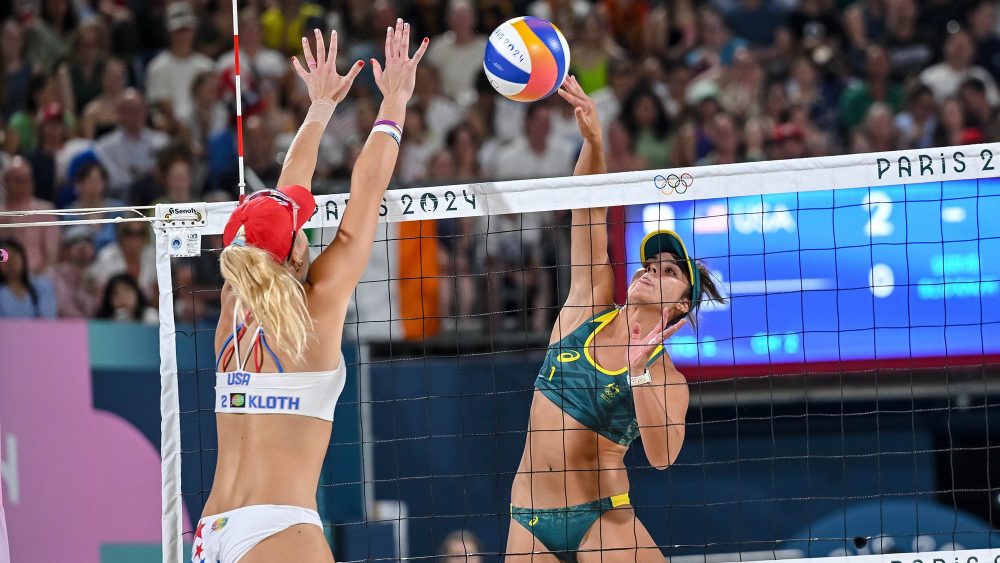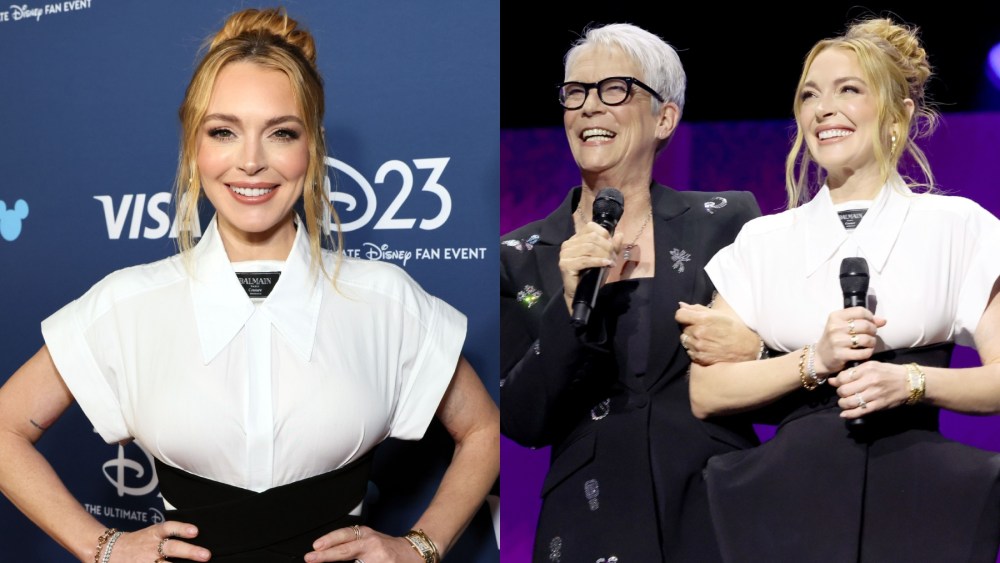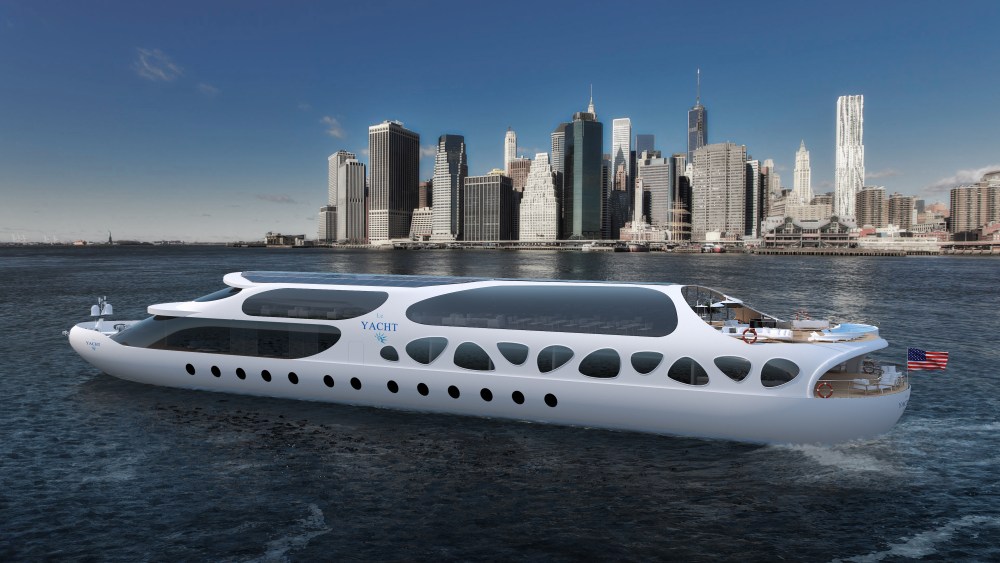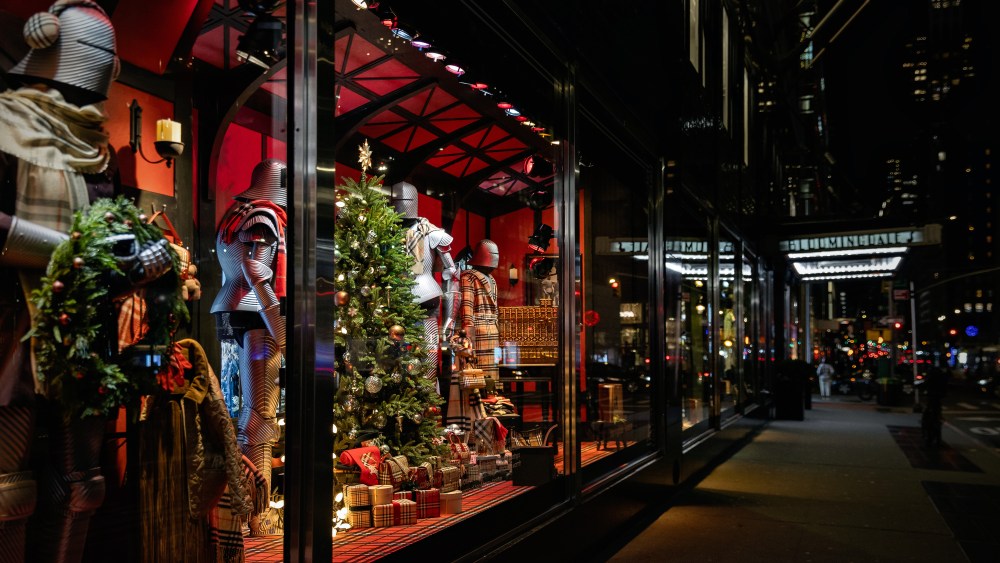Beach volleyball was officially added to the Olympics in 1996. Today, it’s one of the Games’ most popular sports.
Team USA athletes like Misty May-Treanor and Kerri Walsh Jennings, for example, became household names after taking home multiple medals for beach volleyball.
Often, what players wear on the court generates as much press as the game itself — over the years, some have critiqued the sport’s typically tiny women’s uniforms, but according to athletes themselves, there are reasons why bikinis are preferable for play.
You May Also Like
Ahead, learn about the origins of beach volleyball uniforms and how they’ve evolved since.
A ‘Brief’ History
Beach volleyball’s seaside origins explain why for years, athletes have worn uniforms resembling swimwear, i.e. bikini briefs.
“Beach volleyball was a sport that was developed in Hawaii and Southern California and on the beaches of Rio,” Olympic medalist April Ross told the Associated Press in 2021. “You play, and it’s hot, and then you go and jump in the water.”

Even a little rain doesn’t stop the game: some beach volleyball athletes at the 2024 Paris Olympics, for example, have been faced with showers as Paris continues to brace for gloomy weather.
“This is just another reason why we play in bathing suits,” May-Treanor said following a downpour at the 2008 Games.
Uniform Options
Today, female athletes aren’t required to wear bikini briefs during competition. Two pieces are still an option for women but one-pieces and short-sleeve tops are also allowed. Full-length leggings and long-sleeve tops are also permitted in cold weather or for religious reasons. Finally, there are two separate length options for shorts.

Ahead of the 2012 London Olympics, additional uniform options were introduced to encourage more countries to take up the sport. Before then, women wore the typical bikini uniform.
The sport’s governing body, the Fédération Internationale de Volleyball (FIVB), said this was to accommodate players from diverse backgrounds. “Many of these countries have religious and cultural requirements, so the uniform needed to be more flexible,” FIVB spokesman Richard Baker told the Associated Press in 2012.
Men, on the other hand, wear tank tops and bottoms resembling board shorts. In many beach volleyball competitions outside of the Olympics, it’s customary for men to go shirtless. They also have long-sleeve tops and leggings in case it gets chilly.
All players are permitted to wear hats and sunglasses.

Uniform Guidelines
The FIVB mandates specific measurements depending on each uniform. For example, bikini bottoms must have a waistband of no more than 2.8 inches, and men can’t wear shorts longer than 3.9 inches above the knee.
The FIVB requires that all uniforms have “a close fit.” As explained by Olympic beach volleyball player Jennifer Kessy, there are logistical reasons for this. “Our suits need to fit just right so they don’t move places we don’t want them to move,” she told Today in 2021. “A tailored fit is key.”
Women’s briefs “should be cut on an upward angle towards the top of the leg,” while one-pieces “must closely fit and the design must be with open back and upper chest.”

Knee-length pants are “recommended to feature total length of [18.5 inches] and [1.2 inches] above the knee.” Full-length pants must be approximately 35 inches long.
Teammates have to wear matching uniforms, while logos and text also have sizing guidelines.
Those who don’t comply to the FIVB’s uniform rules risk fines and penalties, possibly including disqualification.
Why Some Athletes Prefer Bikinis
Many beach volleyball players say that bikinis are optimal for the sport. Two-pieces prevent sand from getting trapped in the uniform, therefore distracting from play. According to Kessy, this is the reason why she doesn’t wear a one-piece.
“It was restricting and limited my movements — imagine diving chest first and lodging more sand than you care to think down the front of your suit. You can’t keep it in there and it is not easy to get out. I found myself adjusting my one-piece all the time and while it was embarrassing, sure, it also took my focus off the match I was playing,” she explained to Today.
Still, athletes like Doaa Elghobashy of Egypt embrace playing in more modest uniforms. “I have worn the hijab for 10 years,” she told the AP in 2016. “It doesn’t keep me away from the things I love to do, and beach volleyball is one of them.”



